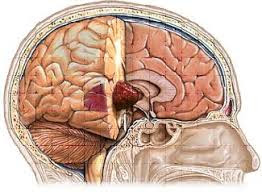A total extremist, careful, en coalition resection of the malignant growth, is the treatment of decision in osteosarcoma. Although around 90% of patients can have appendage rescue a medical procedure, difficulties, especially disease, prosthetic releasing and non-association, or neighborhood cancer repeat might cause the requirement for additional medical procedure or amputation.
 |
| Image Source-Google | Image by- | nature |
Mifamurtide is utilized after a patient has had a medical procedure to eliminate the growth and along with chemotherapy to kill remaining malignancy cells to diminish the danger of disease repeat. Likewise, the choice to have rotation plasty after the growth is taken out exists.
Patients with osteosarcoma are best overseen by a clinical oncologist and a muscular oncologist experienced in overseeing sarcomas. Current standard treatment is to utilize neoadjuvant (chemotherapy given before a medical procedure) trailed by careful resection. The level of growth cell putrefaction (cell passing) found in the cancer after medical procedure gives a thought of the anticipation and furthermore informs the oncologist as to whether the chemotherapy routine ought to be adjusted after surgery.
Standard treatment is a blend of appendage rescue muscular medical procedure whenever the situation allows (or removal now and again) and a mix of high-portion methotrexate with leucovorin salvage, intra-blood vessel cisplatin, adriamycin, ifosfamide with mesna, BCD (bleomycin, cyclophosphamide, dactinomycin), etoposide, and muramyl tripeptide. Rotationplasty might be utilized. Ifosfamide can be utilized as an adjuvant treatment if the putrefaction rate is low.
Regardless of the accomplishment of chemotherapy for osteosarcoma, it has one of the least endurance rates for pediatric malignant growth. The best revealed 10-year endurance rate is 92%; the convention utilized is a forceful intra-blood vessel routine that individualizes treatment dependent on arteriographic response. Three-year occasion free endurance goes from half to 75%, and five-year endurance goes from 60% to 85+% in certain examinations. By and large, 65–70% patients treated five years prior will be alive today. These endurance rates are in general midpoints and shift significantly relying upon the singular corruption rate.
Filgrastim or pegfilgrastim assist with white platelet counts and neutrophil counts. Blood bondings and epoetin alfa assist with sickliness. Computational examination on a board of osteosarcoma cell lines distinguished new shared and explicit restorative targets (proteomic and hereditary) in osteosarcoma, while aggregates showed an expanded job of growth microenvironments.






















